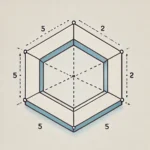What is Soujiyi?
Soujiyi is an ancient martial art originating from East Asia, primarily known for its graceful movements and strategic combat techniques. It emphasizes balance, flexibility, and inner strength, blending physical prowess with mental discipline. Soujiyi has a rich history and continues to be practiced widely for self-defense, fitness, and spiritual growth.
Relevance and Importance
In today’s fast-paced world, the relevance of Soujiyi lies in its holistic approach to health and well-being. Practicing Soujiyi can enhance physical fitness, improve mental clarity, and promote emotional stability. Its techniques are applicable for self-defense, making it a valuable skill in personal safety. Moreover, Soujiyi’s meditative aspects help in stress reduction and fostering a deeper connection with oneself.
Historical Context
Origins of Soujiyi
Soujiyi dates back over a thousand years, with its origins rooted in ancient East Asian warrior traditions. It was developed as a means of self-defense and survival during tumultuous times. Over the centuries, it evolved, incorporating various techniques from different regions and martial arts schools.
Evolution Over Time
The evolution of Soujiyi saw the integration of philosophical teachings from Buddhism and Taoism, emphasizing harmony and balance. It transformed from a purely combative practice to a discipline that also focuses on personal development and spiritual growth.
Key Historical Figures
Several masters have been pivotal in the development and propagation of Soujiyi. Notable among them is Master Zhang Wei, who is credited with formalizing the practice and writing comprehensive treatises on its techniques and philosophy.
Key Principles
Balance and Harmony
Soujiyi emphasizes achieving balance and harmony both within oneself and in interactions with others. This principle is reflected in the smooth and flowing movements that characterize the practice.
Mental Discipline
Mental discipline is central to Soujiyi, requiring practitioners to cultivate focus, patience, and perseverance. Techniques such as meditation and controlled breathing are integral to mastering this aspect.
Flexibility and Adaptability
Flexibility and adaptability are crucial in Soujiyi, both physically and mentally. Practitioners learn to move fluidly, adapting their techniques to various situations and opponents.
Methodologies and Techniques
Basic Stances and Movements
Soujiyi begins with mastering basic stances and movements. These foundational elements are essential for building strength, balance, and proper technique.
Advanced Combat Techniques
As practitioners progress, they learn advanced combat techniques that include strikes, kicks, throws, and joint locks. These techniques are executed with precision and control.
Meditative Practices
Meditative practices in Soujiyi include breathing exercises, visualization, and mindfulness meditation. These practices enhance mental clarity and inner peace.
Training and Equipment
Traditional Training Methods
Traditional training methods involve rigorous physical conditioning, repetitive practice of techniques, and philosophical study. Training often takes place in nature, emphasizing a connection with the environment.
Modern Adaptations
Modern adaptations of Soujiyi include incorporating fitness equipment and cross-training with other martial arts. This helps in enhancing the effectiveness and appeal of Soujiyi to contemporary practitioners.
Essential Equipment
While Soujiyi primarily relies on body movements, some training equipment such as wooden swords, staffs, and resistance bands can be used to enhance training.
Health Benefits
Physical Benefits
Practicing Soujiyi offers numerous physical benefits, including improved cardiovascular health, increased flexibility, and enhanced muscle strength. It also aids in weight management and boosts overall physical fitness.
Mental Health Benefits
The mental health benefits of Soujiyi are profound. Regular practice reduces stress, enhances cognitive function, and promotes emotional stability. The meditative aspects help in achieving a calm and focused mind.
Emotional and Spiritual Benefits
Emotionally, Soujiyi helps in managing negative emotions such as anger and anxiety. Spiritually, it fosters a sense of inner peace and connection with the universe.
Types and Styles of Soujiyi
Traditional Styles
Traditional styles of Soujiyi remain true to the ancient teachings and techniques. These styles emphasize slow, deliberate movements and deep philosophical understanding.
Contemporary Styles
Contemporary styles incorporate elements from other martial arts and modern fitness practices. These styles are often more dynamic and adaptable to the needs of modern practitioners.
Hybrid Forms
Hybrid forms of Soujiyi blend traditional techniques with innovations from various martial arts. These forms offer a comprehensive approach to self-defense and personal development.
Symptoms and Signs of Mastery
Physical Signs
Mastery in Soujiyi is evident through physical signs such as improved posture, enhanced muscle tone, and fluid movements. Practitioners exhibit excellent control over their bodies.
Mental Signs
Mentally, mastery is reflected in heightened focus, clarity of thought, and resilience under pressure. Practitioners are able to remain calm and composed in challenging situations.
Emotional and Spiritual Signs
Emotionally and spiritually, mastery manifests as a deep sense of inner peace, emotional balance, and a strong connection with one’s inner self.
Causes and Risk Factors in Practice
Common Challenges
Common challenges in practicing Soujiyi include physical injuries, mental fatigue, and emotional stress. Overcoming these challenges requires dedication and proper guidance.
Risk Factors
Risk factors involve improper training techniques, lack of proper warm-up, and pushing beyond one’s physical limits. It’s crucial to practice under the supervision of a qualified instructor.
Preventive Measures
Preventive measures include proper warm-up and cool-down routines, listening to one’s body, and maintaining a balanced training schedule. Ensuring a safe training environment is also essential.
Diagnosis and Assessment
Initial Assessment
An initial assessment in Soujiyi involves evaluating the practitioner’s physical fitness, mental focus, and understanding of basic principles. This helps in tailoring a suitable training plan.
Ongoing Evaluation
Ongoing evaluation is critical to track progress and address any emerging issues. Regular feedback from instructors and self-assessment are integral to continuous improvement.
Professional Assessments
Professional assessments by experienced masters provide deeper insights into one’s strengths and areas for improvement. These assessments often include physical, mental, and philosophical evaluations.
Treatment and Improvement Strategies
Physical Training Regimens
Physical training regimens in Soujiyi are designed to build strength, flexibility, and endurance. These regimens include a mix of cardio, strength training, and flexibility exercises.
Mental Conditioning Techniques
Mental conditioning techniques involve meditation, mindfulness, and visualization exercises. These techniques help in enhancing focus, reducing stress, and improving mental resilience.
Emotional and Spiritual Practices
Emotional and spiritual practices include activities such as journaling, reflective meditation, and connecting with nature. These practices promote emotional well-being and spiritual growth.
Preventive Measures for Long-term Practice
Regular Practice
Consistency is key in Soujiyi. Regular practice ensures continuous improvement and helps in maintaining physical and mental health.
Balanced Lifestyle
A balanced lifestyle that includes a healthy diet, adequate rest, and stress management is crucial for long-term practice. Integrating Soujiyi principles into daily life enhances overall well-being.
Injury Prevention
Preventing injuries involves proper technique, adequate warm-up and cool-down, and listening to one’s body. It’s essential to avoid overtraining and seek medical advice when necessary.
Personal Stories and Case Studies
Case Study: Master Zhang Wei
Master Zhang Wei’s journey in Souj iyi showcases the profound impact of dedication and discipline. Starting as a novice, he overcame numerous challenges to become a revered master, inspiring countless practitioners.
Personal Story: Jane Doe
Jane Doe, a corporate professional, shares how Sou jiyi transformed her life. Struggling with stress and physical health issues, she found solace and improvement through regular practice, achieving a balanced and fulfilling life.
Inspirational Journeys
Many practitioners have shared inspirational journeys, highlighting how Souji yi helped them overcome personal struggles, achieve physical fitness, and find inner peace.
Expert Insights
Interview with Master Liu
Master Liu, a renowned So ujiyi instructor, shares insights on the importance of mental discipline and the role of meditation in mastering So ujiyi. He emphasizes the need for continuous learning and self-reflection.
Quotes from Practitioners
Practitioners of Sou jiyi share their experiences and advice. One quote stands out: “Sou jiyi is not just a martial art; it’s a way of life that teaches you to be at peace with yourself and the world around you.”
Medical Perspective
Dr. Emily Chen, a sports medicine specialist, discusses the health benefits of Sou jiyi. She highlights its positive effects on cardiovascular health, mental well-being, and stress management.
Conclusion
Summary of Key Points
Sou yi is a holistic martial art that offers numerous physical, mental, and spiritual benefits. It emphasizes balance, harmony, and mental discipline, making it relevant in today’s fast-paced world. Through its various styles and techniques, Sou jiyi caters to a wide range of practitioners, from those seeking self-defense skills to those looking for a deeper spiritual connection.
Call to Action
For those interested in exploring Soujiyi, it’s essential to find a qualified instructor and start with the basics. Consistent practice and a balanced lifestyle will ensure continuous improvement and long-term benefits. Embrace So ujiyi not just as a martial art, but as a way to enhance your overall well-being and find inner peace.
Read Also: SMOOTHSTACK LAWSUIT – A COMPREHENSIVE ANALYSIS 2024







